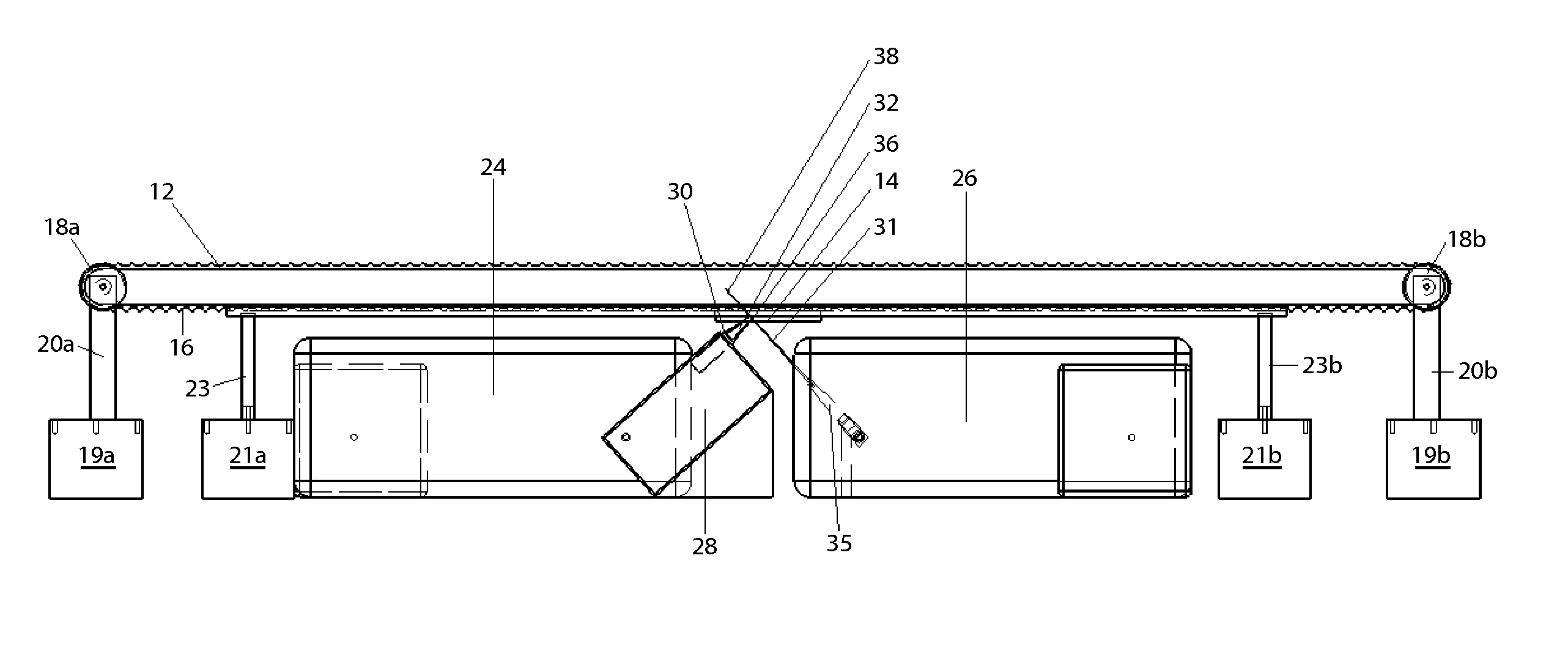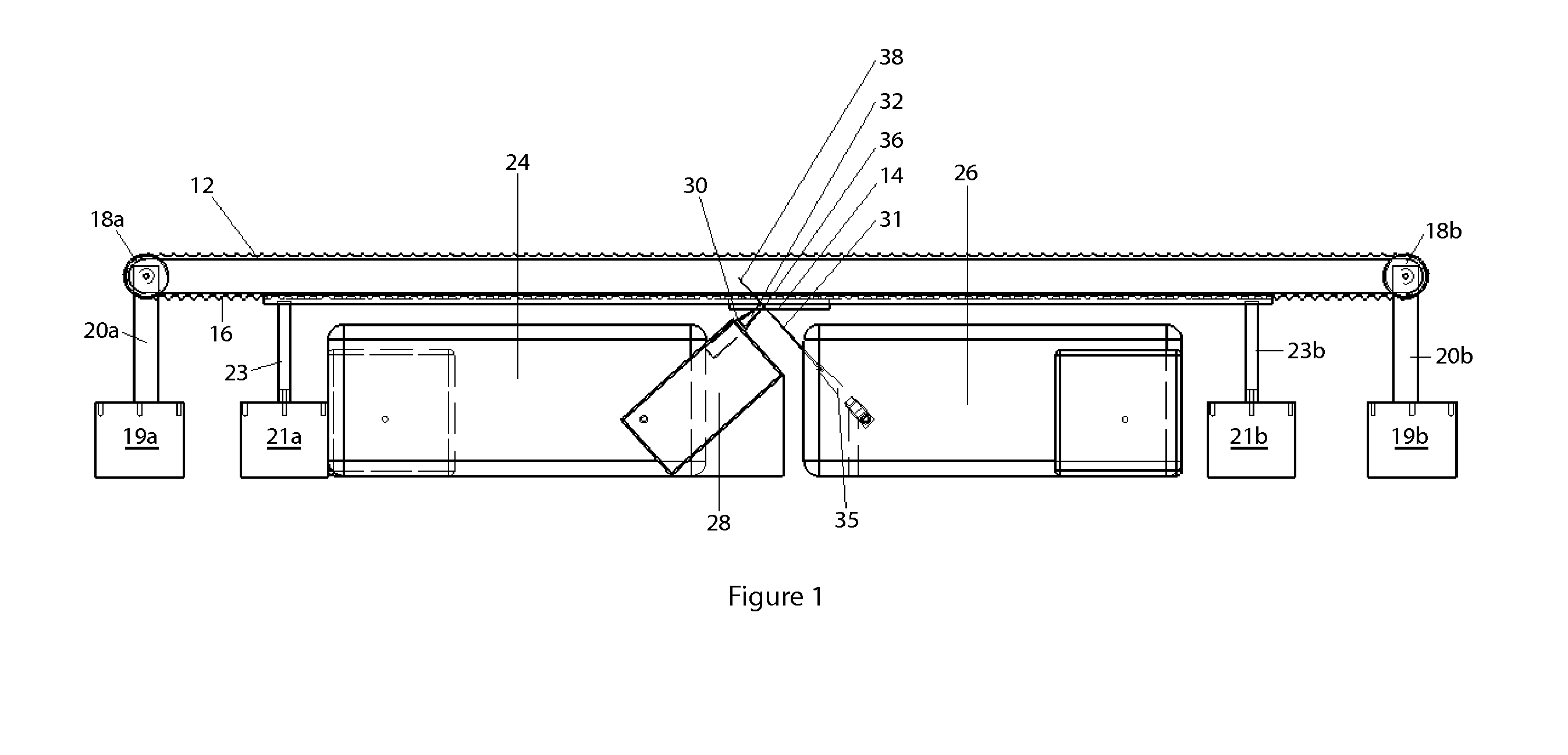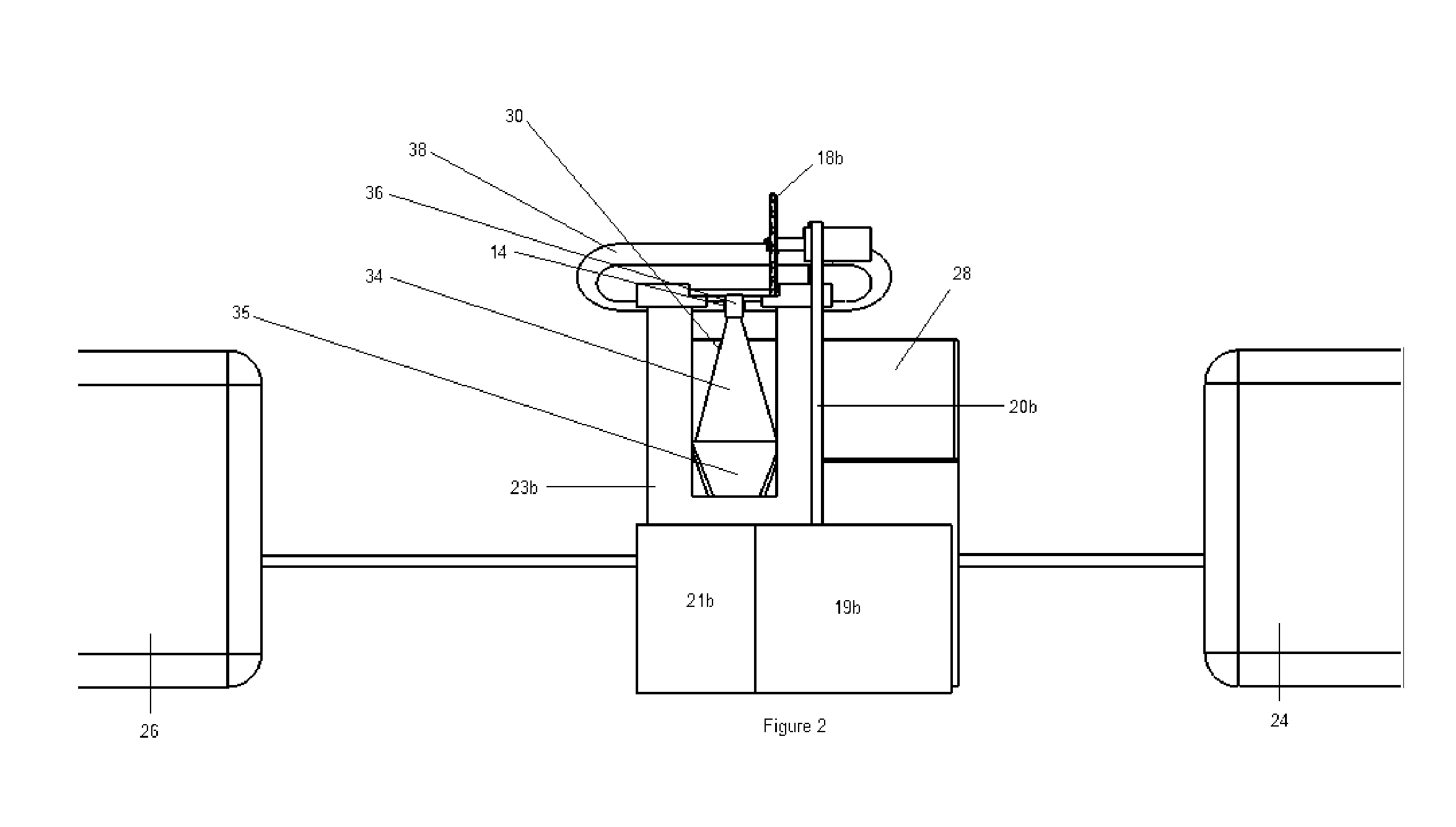Polymer object optical fabrication process
a technology of optical fabrication and polymer objects, applied in the field of microstereolithography, can solve the problems of not incorporating projection technology into the two-photon fabrication process, system limitation in the volume of fabrication, and speed of scanning mirror systems, so as to reduce or eliminate the need for support structures, the effect of rapid prototyping
- Summary
- Abstract
- Description
- Claims
- Application Information
AI Technical Summary
Benefits of technology
Problems solved by technology
Method used
Image
Examples
Embodiment Construction
[0027]This invention includes a method for the patterned solidification, desolidification, or modification of the index of refraction of a photo reactive material by non-degenerate two-photon absorption thereby providing rapid fabrication of three-dimensional micro-structures directly from computer models. The steps of the novel method include:
[0028]Placing a medium capable of selective solidification, desolidification, or refractive index modification via non-degenerate two-photon absorption into a container having at least one optically transparent window so that the medium within the container is accessible by laser light. In the alternative, the entire container may be made of an optically transparent material;
[0029]Providing an array of controllable pixel elements;
[0030]Selecting two synchronized pulsed laser sources having respective wavelengths to induce non-degenerate two-photon polymerization;
[0031]Providing an optical projection system for projecting patterned images of fe...
PUM
| Property | Measurement | Unit |
|---|---|---|
| micro-structures | aaaaa | aaaaa |
| optically transparent | aaaaa | aaaaa |
| wavelength | aaaaa | aaaaa |
Abstract
Description
Claims
Application Information
 Login to view more
Login to view more - R&D Engineer
- R&D Manager
- IP Professional
- Industry Leading Data Capabilities
- Powerful AI technology
- Patent DNA Extraction
Browse by: Latest US Patents, China's latest patents, Technical Efficacy Thesaurus, Application Domain, Technology Topic.
© 2024 PatSnap. All rights reserved.Legal|Privacy policy|Modern Slavery Act Transparency Statement|Sitemap



